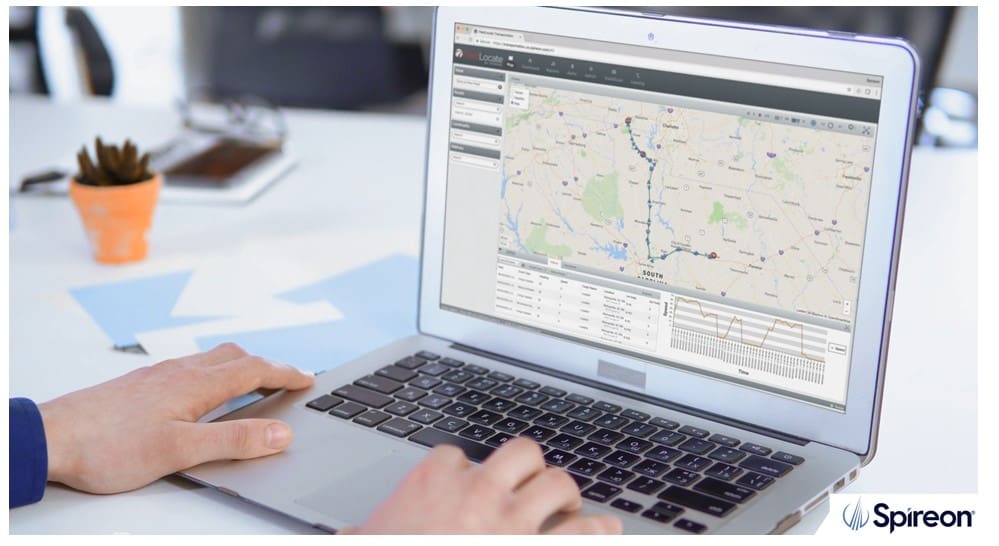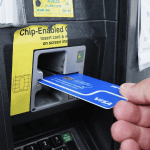
Fleet tracking systems offer far more than just GPS tracking for your crews’ vehicles. This type of technology can improve efficiency, reduce costs and boost overall fleet safety.
“Companies without fleet tracking are running at a disadvantage relative to adopters who are improving the safety and efficiency of their fleets,” Joe DiMartino, CEO of Fleetr. “The ROI on fleet tracking has proven very positive. It is a simple and economical investment worth making.”
Whether you have two trucks or 200, lawn and landscape companies of all sizes can benefit from investing in fleet-tracking software.
“As the fleet size grows, managing multiple vehicles becomes more complex, making the benefits of tracking more significant in terms of efficiency and cost savings,” says Taylor Gould, chief marketing officer for SingleOps.
Route Density and Efficiencies
One of the main benefits of fleet tracking is the increased visibility of your team.
“It’s like cloning yourself,” says Corey Fongemie, owner of GPS Fleet Consulting. “If you have 10 trucks, it’s like putting yourself into 10 trucks and monitoring what’s going on on a daily basis. It’s a great management tool to get more eyes on the team essentially.”
DiMartino says fleet tracking software can create detailed trip history reports that you can analyze to tighten up your route density. Gould adds that geographically clustering jobs allows landscape companies to save fuel and complete more jobs in a day.
“Idling is another behavior that is monitored, and that is used to improve crew productivity and reduce fuel expenses,” DiMartino says.
Fongemie says fleet tracking can also help you manage your productivity and efficiency as you see where crews are during the day, how long their routes are taking and how long they are staying on specific properties.
Gould says through their integration with FleetSharp, SingleOps allows companies to use fleet tracking data to validate timesheet entries, ensuring accurate payroll and reducing discrepancies.
Billing and Validation
For the smaller fleets, Fongemie says they can utilize fleet tracking to aid in billing.
“The fleet tracking will help them bill clients when they were last serviced,” Fongemie says. “Even with one truck, they’re on the road, and they’ll do the billing at the end of the week. It’s nice to be able to go back on the GPS system and say, ‘Alright, I hit these accounts on Monday, Tuesday and Wednesday.’ It’s just a verification of where you were and how long they were there for.”
It can also provide proof of when your crews were or weren’t in a specific location at a certain time.
“Take spring cleanups or fall cleanups,” Fongemie says. “For example, we’ve had customers call us and say they weren’t getting paid because one of their customers couldn’t believe they were there and so by proving they were there that one time, they’re going to get paid now.”
Proving your vehicles weren’t somewhere can be just as important when establishing your company’s innocence in cases of hit-and-run or other damage disputes.
“By offering precise location data and time stamps, companies can verify that their vehicles were not at the alleged incident location, protecting them from false claims and potential liability,” Gould says.
Knowing the real-time location of your crews can enhance customer satisfaction by sharing accurate ETAs. DiMartino adds you can use current vehicle locations to deploy the closest crew when a customer needs service.
Safety
With increased fleet visibility, you can track unsafe driving behaviors, including speeding, harsh braking, rapid acceleration, and excessive idling.
Gould says by monitoring these behaviors, companies can provide targeted training to drivers, promote safer driving habits and reduce the risk of accidents.
“Some of their employees are going to have heavier feet or tailgate more,” Fongemie says. “Some of the fleet tracking software systems even have scorecards that can turn this into gamification. So you can gamify the fleet, figure out and then reward the drivers who are a little more cautious.”
DiMartino notes that accidents will be reduced as your safe driving increases, and commercial auto insurance premiums can lower as a result.
Fleet tracking can also be beneficial in tracking preventative maintenance and overall vehicle health.
“For example, they can monitor engine diagnostics, alerting managers to potential issues before they become costly repairs,” Gould says.
Fongemie says every month they have stories of their customers being able to recover their stolen equipment or vehicle that were equipped with GPS devices.
“Mowers, trailers and other assets can be tracked for time at each location and will never be lost again,” DiMartino says.
DiMartino says they monitor driving outside of defined territories and outside of defined working hours, which saves owners from unauthorized vehicle usage and expenses. They also report if the device is disconnected for unsafe or unauthorized use.
“Investing in fleet tracking is a smart decision for landscape companies looking to improve efficiency, reduce costs, and enhance customer service,” Gould says. “The ability to monitor vehicle locations, optimize routes, and ensure driver safety translates to significant operational benefits.”
This article was published in the July/August issue of the magazine. To read more stories from The Edge magazine, click here to subscribe to the digital edition.




